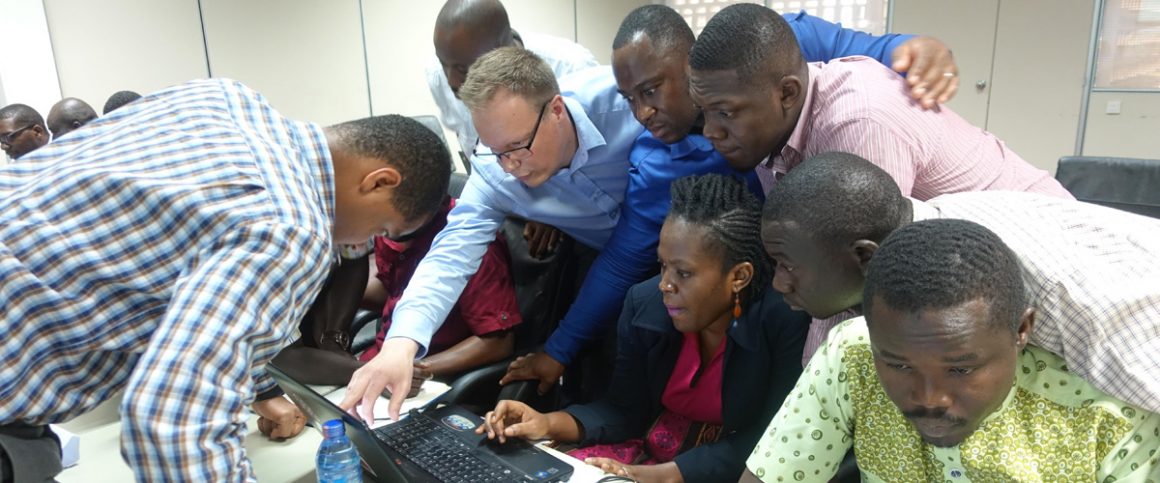DVB-T2 System and Network Design
Learning Objectives
This training course aims to provide theoretical and practical knowledge about the DVB-T2/Lite system, and how to build a transmission network. The course covers the complete distribution chain to network planning and implementation. After completing this course, delegates will understand the technology behind DVB-T2 system and have know how to plan and implement DVB-T2 networks. There is particular focus on SFN network design and implementation.
During the course, we also establish a “full” DVB-T2 distribution chain in order to demonstrate features of DVB-T2 and options in network deployment.
Parts of the content can be customised into an interactive workshop where the particular needs of your organisation are dealt with. This option is particularly useful for organisations before the actual deployment of a T2 network. This is one of our most appreciated courses.
Course Content
The course covers the following subjects:
1. DVB-T2 system overview
- T2 standard overview
- Important system features
- Comparison with other systems DVB-T, ISDB-T and DTMB, DTMB-A (China Standard) and ATSC 3.0
1b. Country overview DVB-T2
- Overview of deployment of DVB-T2 and status
2. T2 Lite a part of the DVB-T2 standard
- Relationship
- Features of DVB-T2 Lite
- How can it be used
2b. T2 Lite | First Deployments and experience
- Experience from using T2 Lite
- Field trial in Copenhagen T2 Lite vs DAB+ | T2 Lite vs DVB-H
- Field trial Italy (T2 Lite in FEF)
3. Future broadcast systems NGT and ATSC 3.0
- A look into the future broadcast system
- Features in the Candidate US DTT ATSC 3.0 standard
- Possible options for a NGT Next generation terrestrial standard
4. Basic DTT Network planning
- Relation to analogue TV planning
- DTT planning basics
- Planning parameters and methods
5. DVB-T2 modulator Presentation
- DVB-T2 modulator Functionality
- Live Demo: DVB-T2 modulator
- Setting up the modulator
6. DVB-T2 Coverage aspects and performance
- Important DVB-T2 aspects in planning
- Choice of system variant for DVB-T2
- Relation DVB-T2 Base and T2 Lite
- Coverage calculations in DVB-T2
7. DVB-T2 SFN Network planning
- Pro and Cons of SFN
- Choice of system parameters in DVB-T2 SFNs
- SFN self-interference and other SFN features of DVB-T2
- SFN optimization
7b. SFN gap filler planning
- Use of SFN gapfiller in network deployment
- Important aspects and limitation
- Examples of gapfillers
7c. Demo SFN planning analysis and optimization
- Presentation of the PROGIRA® plan planning software
- SFN planning examples
- Discussion on DTT SFNs
8. DVB-T2 Network overview
- Overview of whole DTT distribution chain
- DVB-T2 network Requirements
- Important aspects in Network design/ architecture
8b. DVB-T2 Network Architecture
- Local content insertion
- Approaches for Regional Content in T2 network
- Deterministic Multiplexing
- PLP Replacement
- Local insert / regionalization + discussion session & interference
9. T2 Gateway Presentation
- T2 Gateway: the key network element
- Gateway Functionality | Mode B
- Live Demo: Setting up a T2 Gateway
9b. Demo DVB-T2 calculator
- Presentation of “Universal DVB-T2 Calculator” spreadsheet which provides an easy way to adjust step-by-step the various set of parameters and to weight the obtained results.
9c. Discussion session on DVB-T2 network architecture
10. DVB-T/T2 transmitters
- Different types of transmitters
- Transmitter Requirements
- Options for improving efficiency
10b. Transmitter efficiency
- Methods used to improve transmitter efficiency
- The importance of adaptive pre-correction
- PAPR adaptive clipper
11a. DVB-T2 chip & Receiver devices
- Overview of new v 1.3.1 chip for fixed, mobile device & In-car Entertainment
- Demo of DVB-T2 mobile receiver & In-car Entertainment STB with diversity
11b. DVB-T2 Receivers Requirements
- Receivers requirements
- Receiver testing and performance
- Some results of receiver performance testing
- Options for testing Receivers
12a. Measurement and monitoring in DTT network
- How and Why?
- Benefits of monitoring
- Demonstration of monitoring possibilities
12b. DVB-T and T2 Transmission testing
- Important concepts MER, BER etc
- Modulation parameters
- Transmitter testing – important parameters
13. Antennas, combiners and feeders
- TX-Station design aspects
- Combiner and antenna dimensioning
- Influence of coverage for portable and rooftop coverage
14. LTE interference into DTT
- What are the issues?
- Interference mitiation
15a. Coverage Verification Measurements
- Why measure coverage?
- Data processing
- Comparison prediction and measurements
- Example of measurement data
15b. Demo broadcast drive test
- Options for Presentation analyzing of coverage measurements in for example Google Earth and PROGIRA® plan
15c. Demo RF probe + Statistical processing software
- Monitoring and surveillance using cloud based systems
- Measurement of DVB-T2 signal quality parameters
- Statistics graphs and reports.
16. DTT Introduction Roadmap
- Steps for successful DTT launch
- Analogue TV switch off (ASO)
Click here to change this text

